Some of the best inventions were created by mistake. Penicillin, the Slinky, the pacemaker, Post-it notes, the microwave oven and safety glass, to name just a few. Then there’s the Volkswagen Polo Harlequin, or Harlekin, if you’re reading this in Europe.
Okay, the Harlequin wasn’t a mistake in the traditional sense. It wasn’t the result of an illicit affair involving Daddy Passat and Mummy Golf. Workers on the Wolfsburg production line didn’t get the instructions for the third-generation (6N) Polo horribly wrong. Instead, the car – the Harlekin name came later – was borne out of the need for a sales tool, designed to showcase the new Polo’s modularity and personalisation options.

There were four colours: green for paintwork, blue for engine and chassis, yellow for interior and red for special equipment. Building blocks, which can be seen on this fan site, designed to promote the Polo’s strapline of ‘So vielseitig konn klein sein’, or ‘Small can be so versatile’. Legend has it that a bunch of trainees came up with the idea of creating a fleet of ten Polos in 1994 to showcase the modular system better than any brochure could do, with a further ten following in 1995. The multi-coloured Polo, complete with mismatched wheels, appeared in dealer literature, customer-facing adverts and on phonecards (remember them?), and Volkswagen even produced a thousand 1:87 scale models. Cue a rush to open Germany eBay starting in one, two… you’ve already gone, haven’t you?
If you’re still here, you’ll be pleased – and perhaps a little surprised – to discover that the story didn’t stop there. The Germans hadn’t been this excited about something since The Scorpions hit number one across Europe with the whistle-tastic “Wind of Change” and began pestering dealers for a production version of Germany’s Amazing Technicolour Dreamboat. Sensing an opportunity, VW’s marketing bods set to work creating a Polo Harlekin for the 1995 Frankfurt Motor Show, where it somehow managed to outshine the Mitsubishi Carisma. Lotus also unveiled something significant at the event, but its name escapes us.
Four cars were removed from the production line: one in Chagall Blue, another in Pistachio Green, one in Yellow and the other Flash Red, before rising like chameleons from the, er, flames of desire. Frankfurt was treated to a spectacle that looked like something created by a body shop when you answered “yes” when asked what colour you’d like.
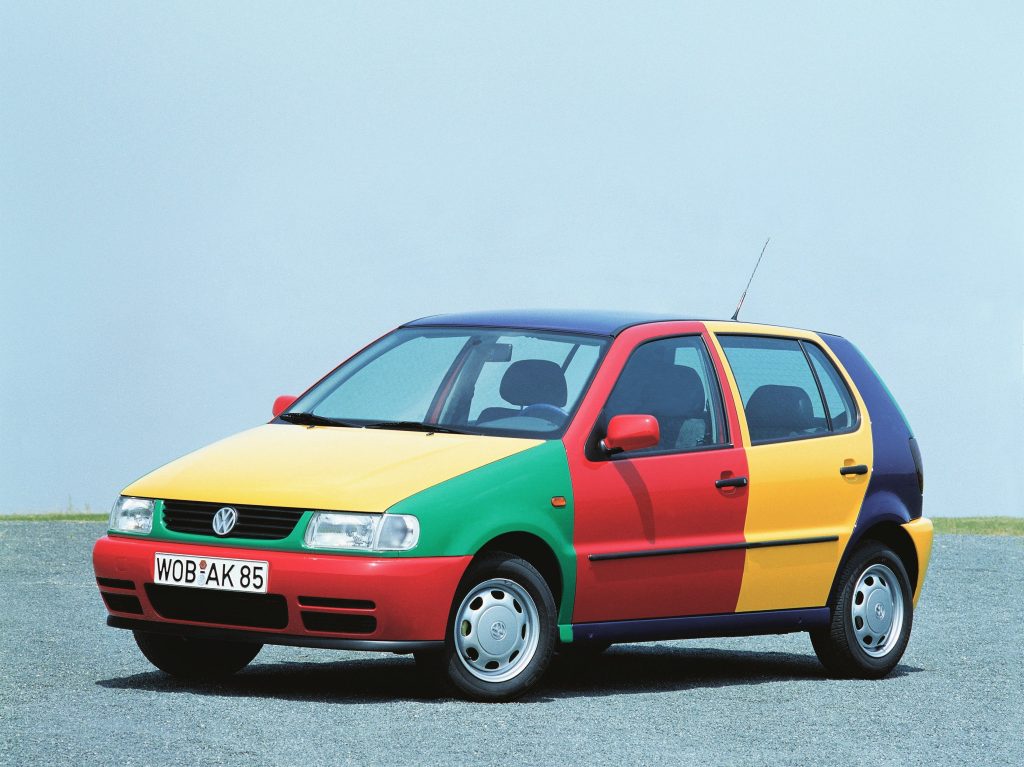
That should have been the end of the story. Aside from some mildly amused guffawing in Frankfurt and a few column inches in the motoring press, the United Colours of They Did What? could (should?) have been consigned to the Big Book of German Automotive Sales and Marketing History. But this was little more than a prelude to the main event.
Volkswagen planned a run of 1000 cars, complete with consecutive serial numbers, certificate and numbered key rings. Then it appeared in the UK, land of the Carry On films, end-of-the-pier jokes and Mr Blobby. It was a match made in heaven. Flanked by single-coloured versions of the Volkswagen Polo and Golf at London Motorfair, the four-colour Polo stood out like a… well, a four-colour Polo. You’ll note from the overhead photo that the roof, C-pillar and sills are Flash Red; this would have been the car’s original colour before it was whipped from the production line to be turned into the automotive equivalent of Neapolitan ice cream. A case of here today, cone tomorrow, or something.
This was a ‘Version 4’ car, which came with a Yellow tailgate, front doors and front bumper, Pistachio Green rear doors, bonnet and rear bumper, and Chagall Blue front wings and grille. Customers were unable to specify a colour combination, with Volkswagen promoting this as “an element of surprise”. In reality, it was probably due to the company not wanting a surplus of body shells and panels in Wolfsburg.
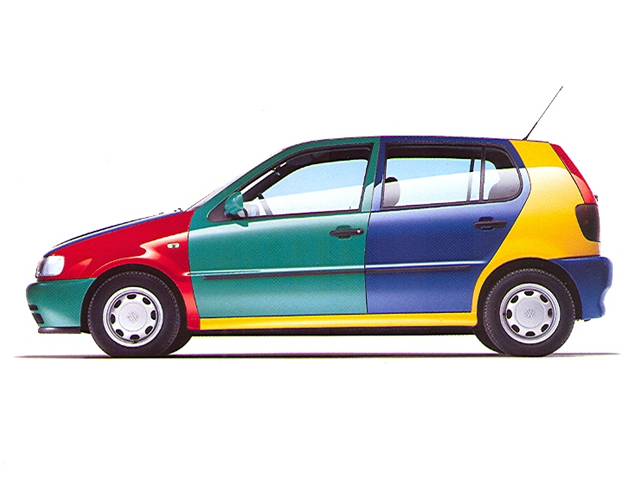
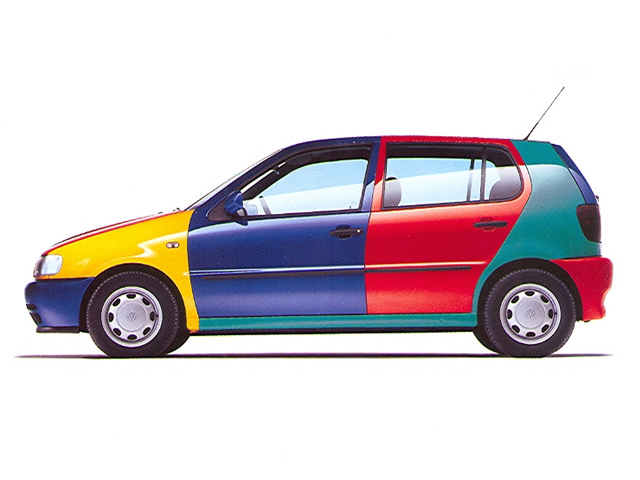
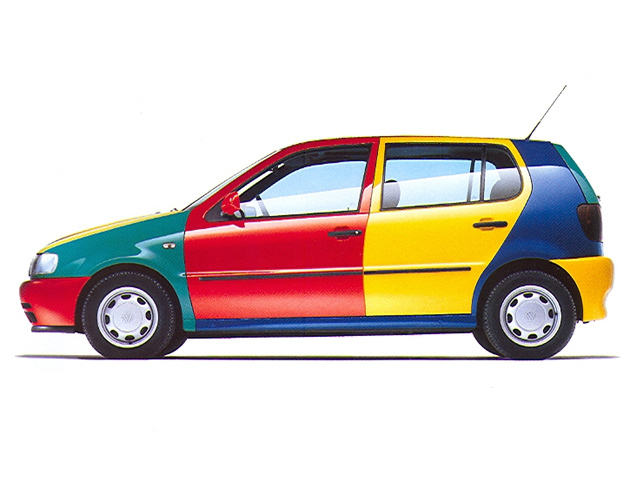
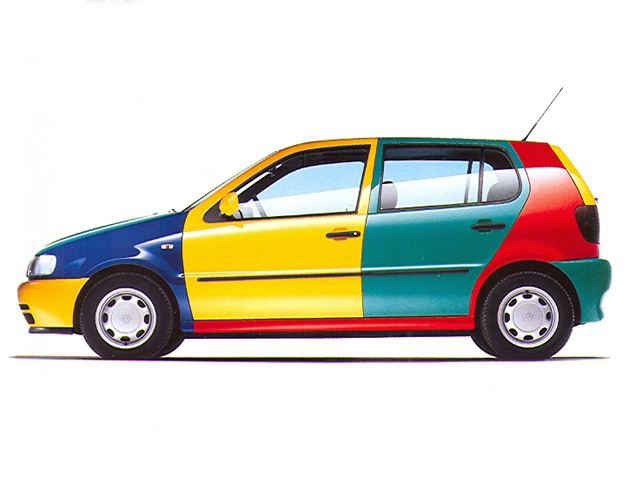
Volkswagen made no secret of the car’s origins. In a press ad headlined by ‘No, honestly,’ it said: “The Harlequin, as it’s called, started life as a car show gimmick to indicate the colours available.” It went on to promote the Polo range, before concluding: “We’ve even made one that runs on rabbit droppings.” Somebody must have discovered Wolfsburg’s sense of humour cupboard at some point in the 1990s.
Based on the 1.4 CL, the Harlequin cost £11,095, which is the equivalent of £20,000 in today’s money. For that, you got bespoke upholstery, driver’s airbag, GLX ‘sports’ bumpers, clear indicator lenses, darked rear lenses and a guarantee that your neighbours will asking whether you’d bought the car from a travelling circus. Still, life’s too short to drive silver and grey cars; fair play to Volkswagen for adding a little colour to our roads.
The best estimate is that Volkswagen built 3806 Harlequins, including the original batch of 1000, plus 500 raffled in a German McDonald’s promotion. Today, there are reportedly 17 on UK roads, with a further 41 listed as SORN. Interestingly, the Harlequins are registered with the DVLA as ‘multi-coloured’, so this is something you might want to check if you’re looking at a fake car. Yes, they do exist.
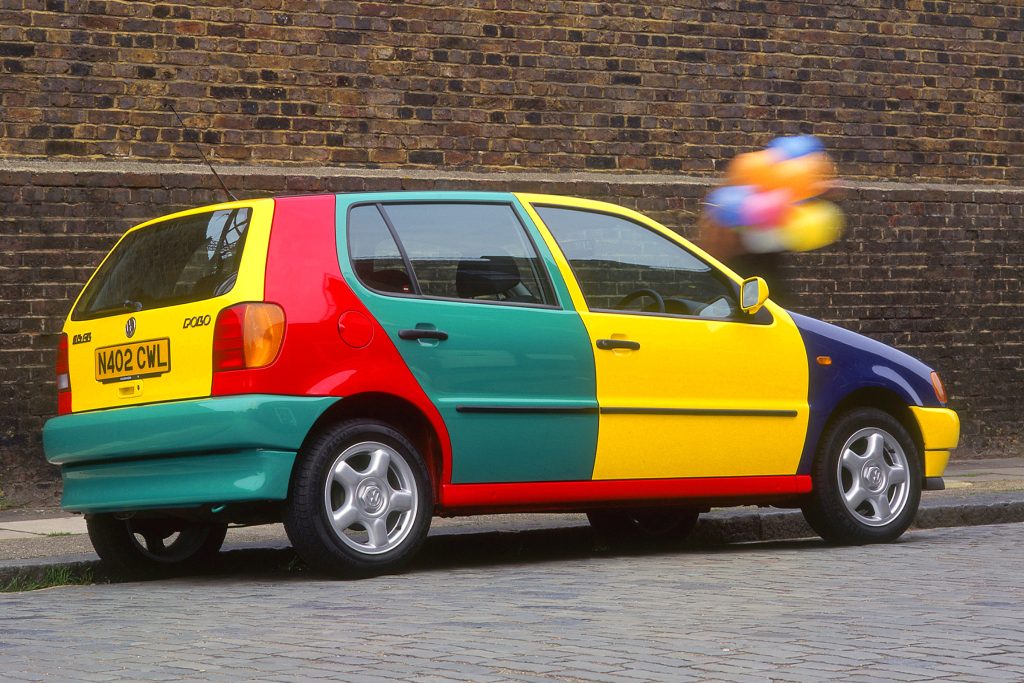
Twenty-five years on from the launch of the Polo Harlequin, Volkswagen’s Dutch importer created a homage to the original using the current sixth-generation Polo. If nothing else, it shows how bloated small cars have become. Once again, Volkswagen insisted that it was a one-off and, 18 months on, it looks like the company is staying true to its word.
The Polo isn’t even the only example of Volkswagen going crazy with colours. Volkswagen North America produced a limited number of Mk3 Golf Harlequins for the 1996 show circuit, with a few cars supplied to the Summer Olympics in Atlanta. There are rumours that some of the cars were converted to single-colour Golfs by a dealer in the city. What a killjoy.
We should also remember the classic Volkswagen advert of the 1960s, designed to showcase the interchangeable parts of the Beetle. Green wing blue bonnet, beige wing and turquoise door – it looks like something Mr Tumble would drive. Check out the Mexican-built homage to the Beetle Harlequin, but don’t Google ‘Mr Tumble car’.
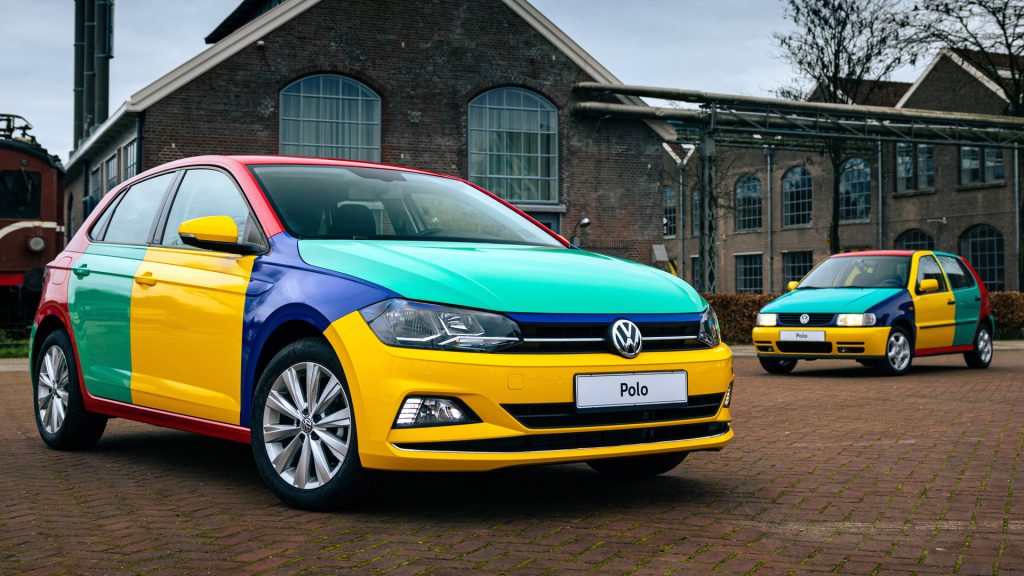
Like anything bold or adventurous, the Polo Harlequin divides opinion. To some, it’s a novelty act in an otherwise dull but worthy of range of cars. To others, it’s a blot on the landscape that shouldn’t have made it out of Frankfurt. It’s neither as beneficial as penicillin or the pacemaker, nor as useful as the microwave or Post-it notes, but we’re glad the Polo Harlequin exists. It’s the Slinky of the car world, just don’t push it downstairs.
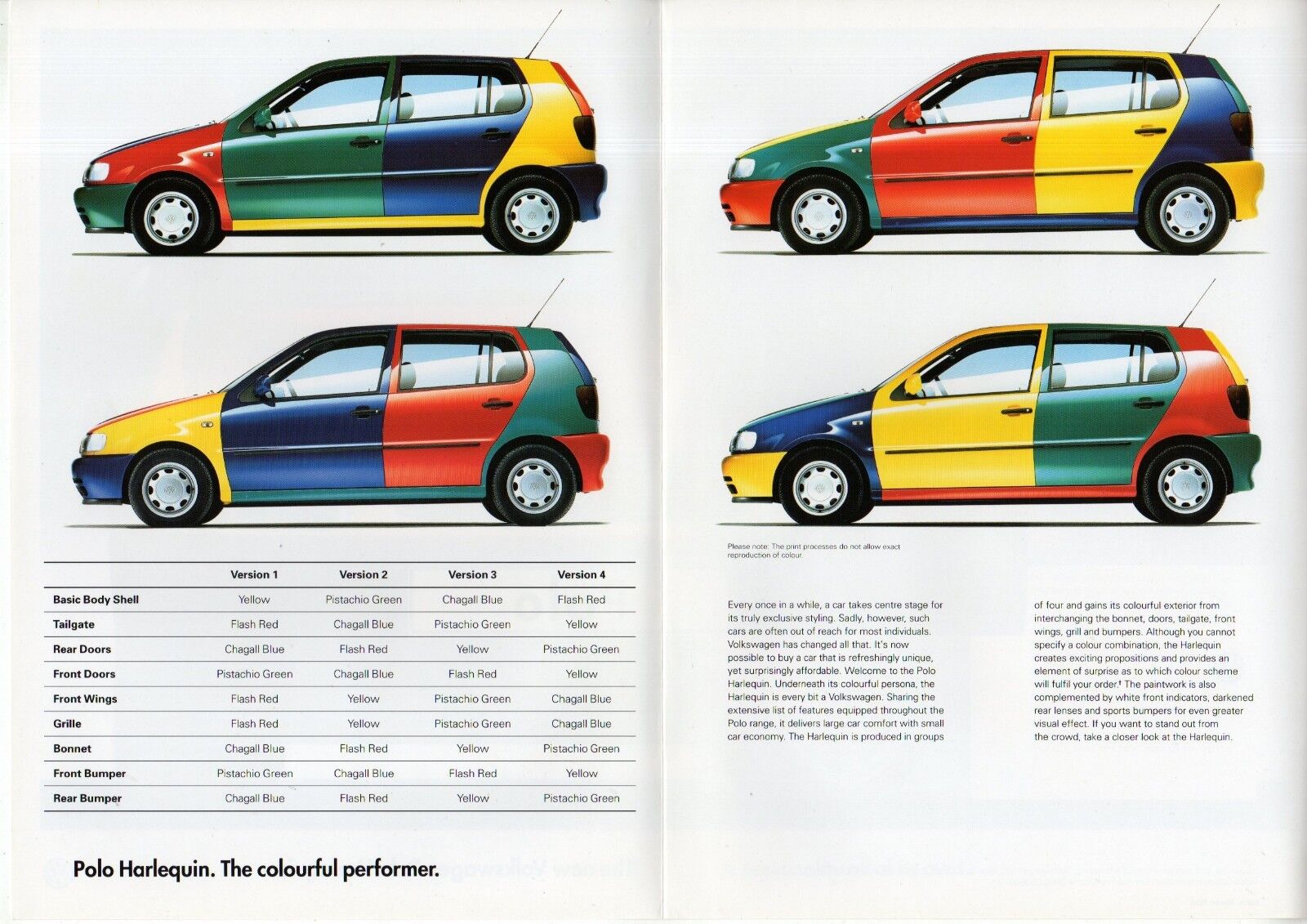
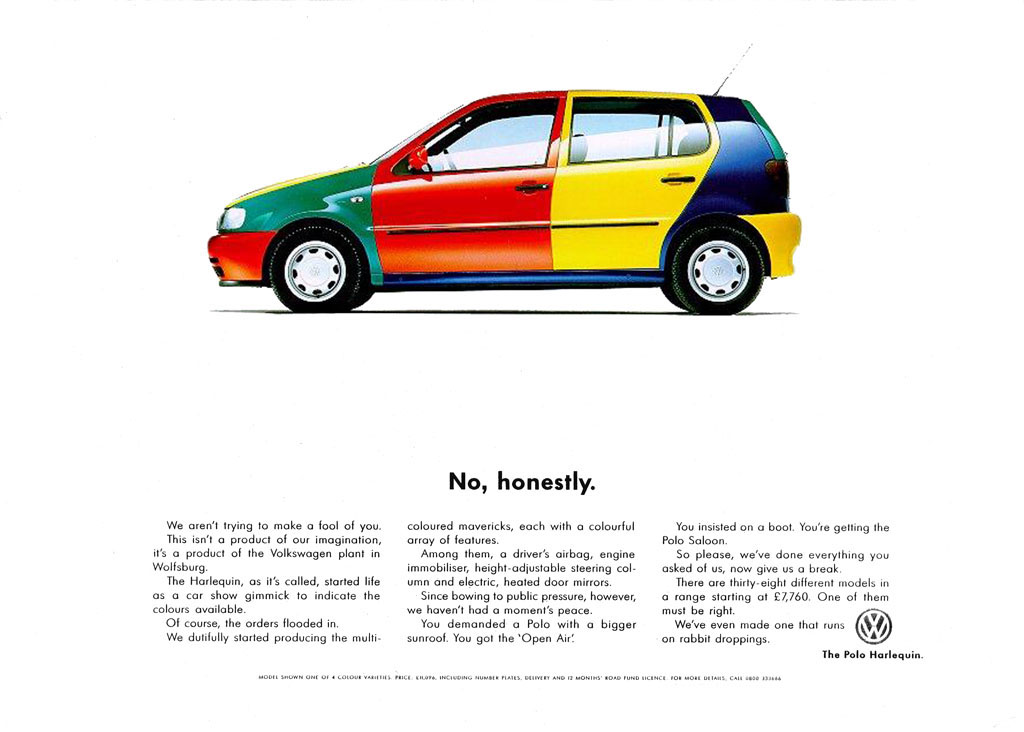
Read more
Unexceptional Classifieds: Volkswagen Polo Fox
Unexceptional Classifieds: Volkswagen Polo Coupe
Five essentials of an Unexceptional Car (1973-’85)
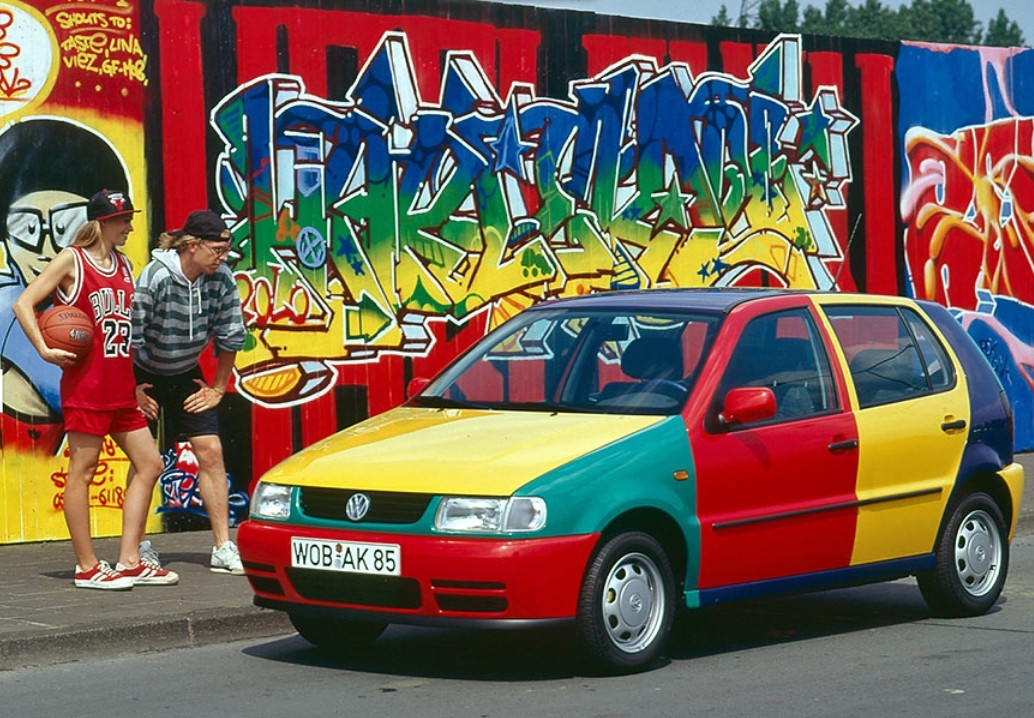

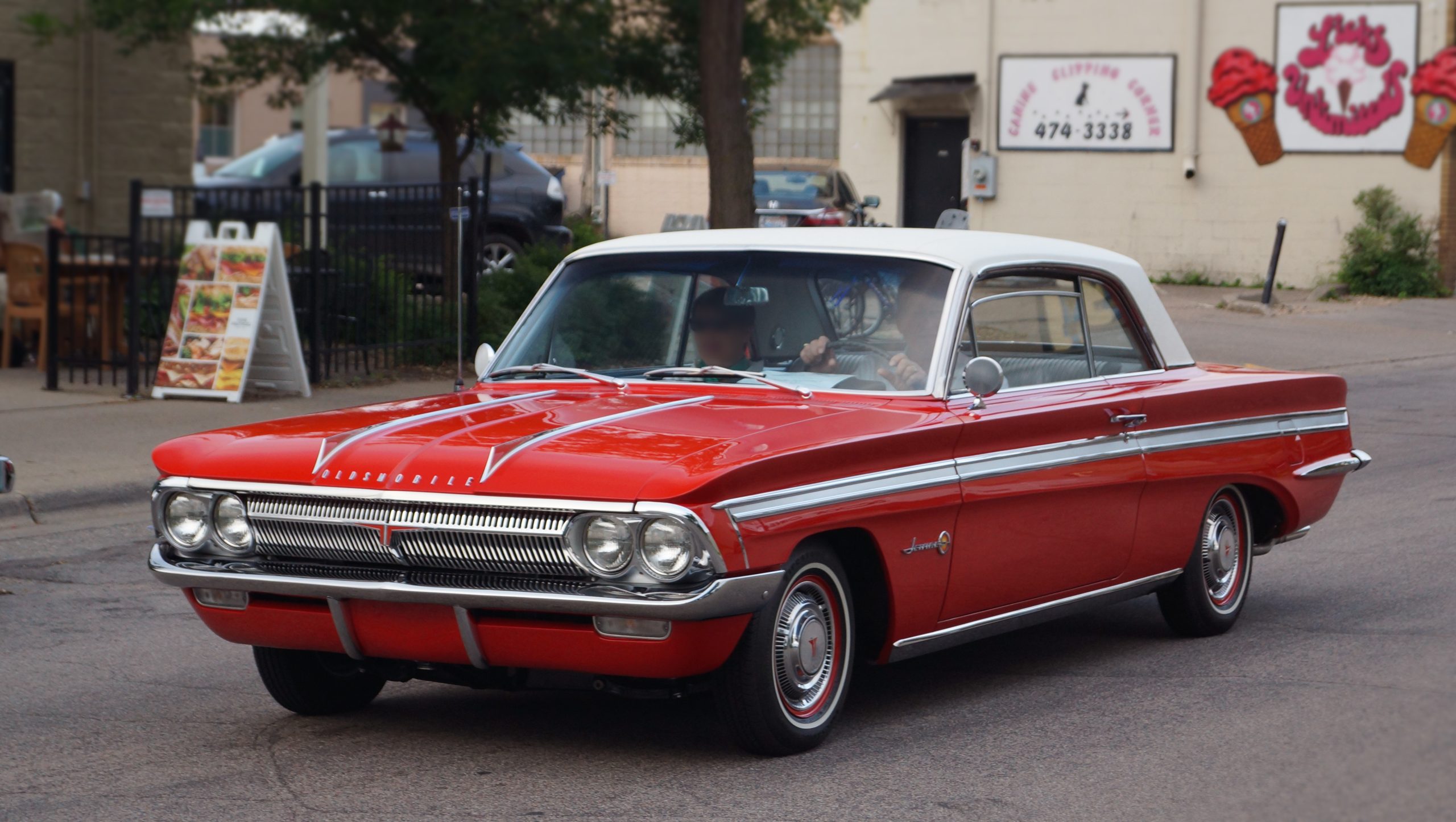
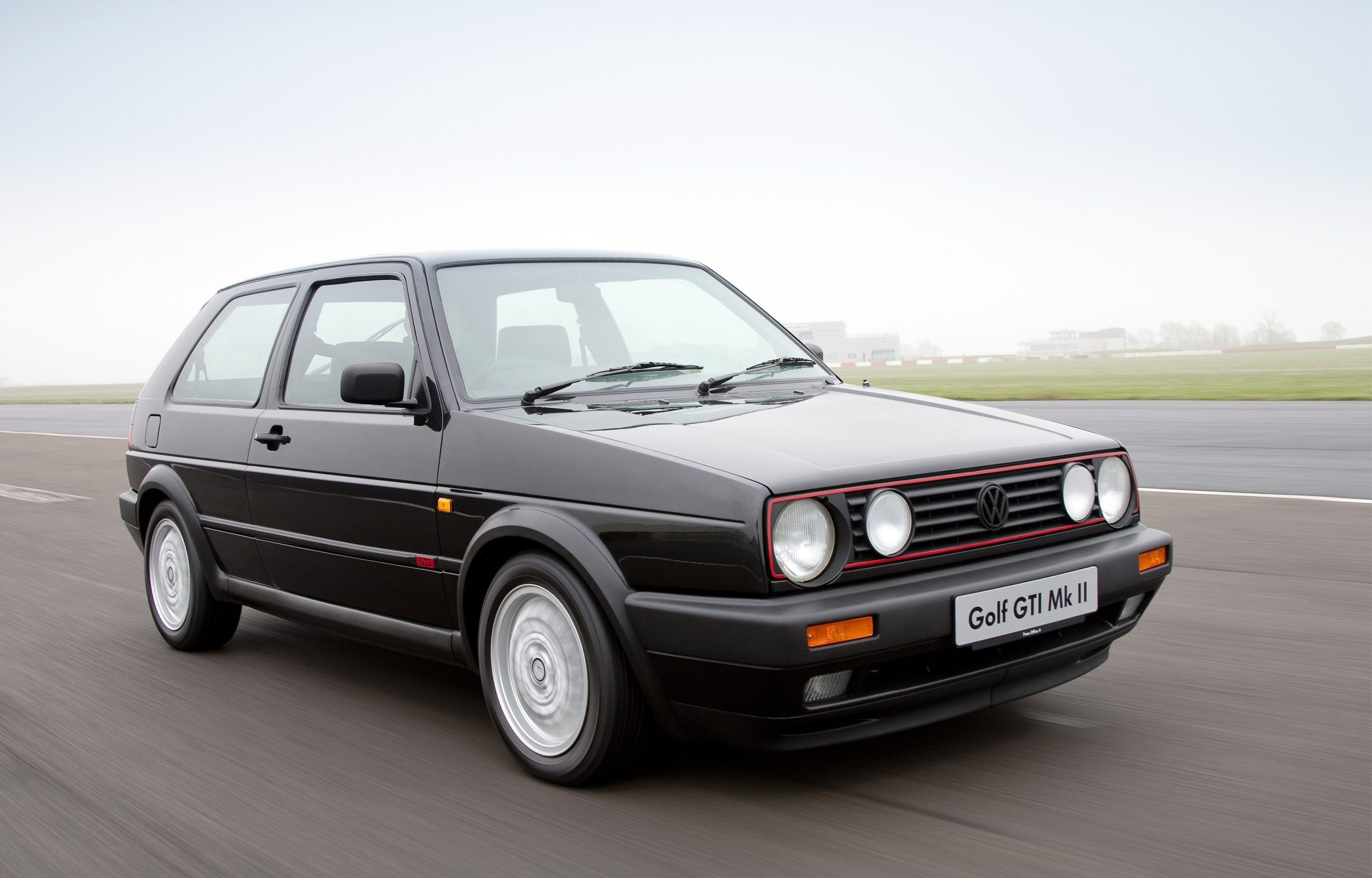






Was there not an earlier Polo version based on the Seat Ibiza – here in South Africa they were the same thing at one point in the ’90s… and I am sure I remember a Polo Classic, aka Seat Ibiza four-door sedan in similar format? Definitely an acquired taste – not one I would rush to acquire myself, but the world, as you say, would be duller without the outliers…